When people tell me they’re interested in getting into paddling, one of the first things I ask is whether they’re interested in canoeing or kayaking. Often, they’ve already made up their minds, but if you’re just getting started, it’s worth keeping an open mind.
Canoes and kayaks are similar, but each has advantages and disadvantages that can make a big difference in what you do on the water. After 30 years in the paddlesports industry, if you tell me you want to buy a kayak to paddle in the Boundary Waters, I’ll try hard to convince you that you’ll be better off with a canoe. And if you’re planning to paddle Lake Superior in an open canoe, I’ll do my best to steer you toward a sea kayak. Choosing the right vessel can be overwhelming for beginners, but this article will help guide you in the right direction.
Key differences between a canoe and kayak
Generally, kayaks are propelled using a two-bladed paddle, alternating strokes on each side of the boat. Canoes are typically paddled with a single-bladed paddle, requiring the paddler to use skilled strokes—or switch sides—to travel in a straight course.
However, the most significant difference between kayaks and canoes is in the design. Canoes are open on top, making them easy to get in and out of and load with bulky camping gear. The open design can be more challenging to handle in wind and rough water, which is why many people prefer to use canoes on smaller lakes and more sheltered waters.
Kayaks come in two main types: sit-inside and sit-on-top. Sit-inside kayaks feature an enclosed cockpit with a deck that reduces wind resistance. When paired with a sprayskirt, waves wash over the deck, making sit-inside kayaks suited for bigger water as well as whitewater paddling. Sit-on-top kayaks feature an open deck. These kayaks are the easiest to get on and off of, are typically quite wide and offer exceptional stability, and are better suited to warm-weather paddling environments.
The key is to pick the right vessel for the type of paddling you want to do.
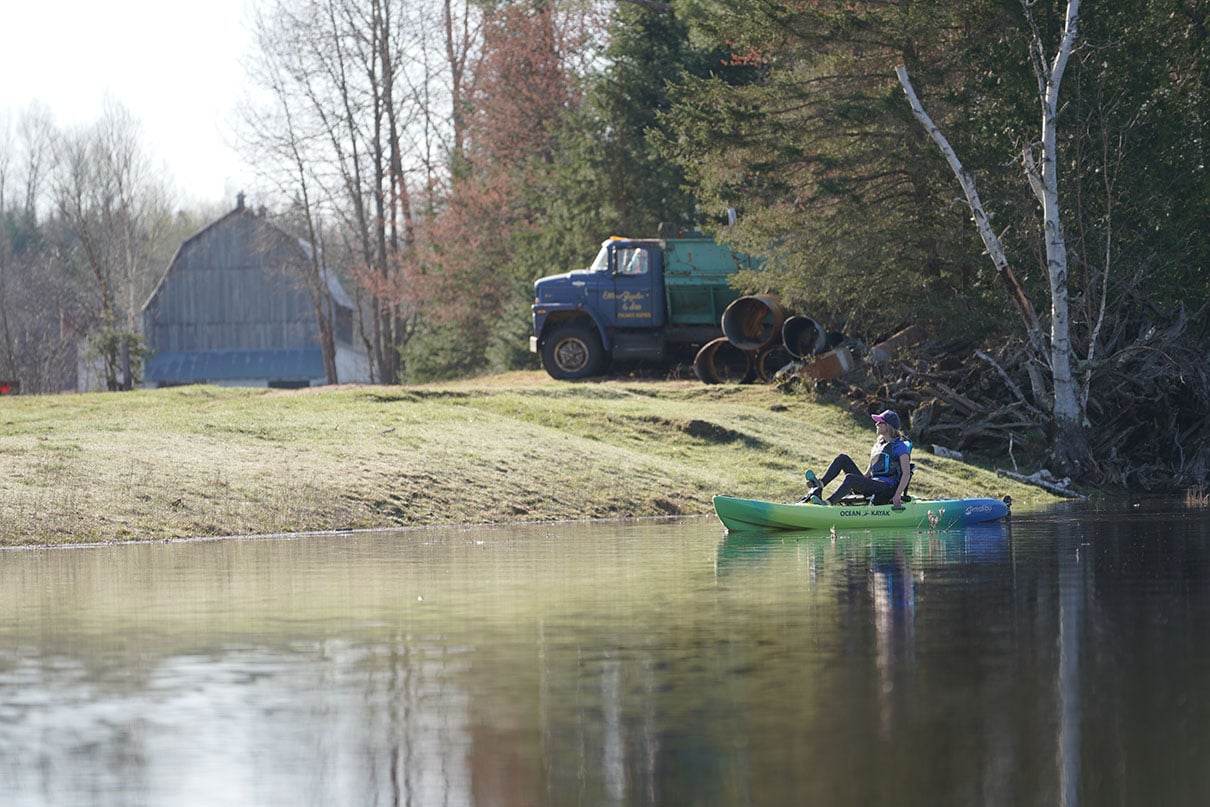
Which is better: canoeing or kayaking?
To decide whether a canoe or kayak is best for you, consider the type of water you’ll be paddling and the activities you want to do. Will you paddle solo, tandem, or with kids or a pet? Will you explore calm marshlands or navigate choppy bays? How vital is cargo space, and will you camp with your canoe or kayak? Will portaging be necessary, and are you paddling in warm or cold conditions?
Before we dive into which factors each type of craft excels at, it’s important to note that both canoes and kayaks come in many designs and constructions, each suited for different activities. Canoes range from banana-shaped whitewater models to skinny racing canoes, wide hunting canoes, square-stern models and even hybrids that resemble kayaks. Similarly, kayaks vary widely, including short whitewater kayaks, long touring kayaks, sprint racing kayaks, stable recreational types, sit-on-tops and fishing kayaks.
With so many options, generalizing can be tricky, but we’ll cover the essential factors to consider when choosing a canoe or a kayak below. Bottomline: For new paddlers, the most significant advantage of the average canoe is its cargo capacity and ease of portaging, while the biggest advantage of a kayak is its ease of use and performance in wind and waves.
Ease of handling for beginners
Kayaks use a double-bladed paddle and alternate forward strokes on either side of the boat. This makes moving a kayak straight ahead through the water more intuitive than a canoe. Touring kayaks with rudders are even easier to use—simply paddle and press one of the pedals with one foot to steer the kayak in that direction. These elements make it easier for many people to get into a kayak for the first time and successfully control the boat.
Paddling a canoe in a straight line takes a little practice, but don’t be intimidated. Beginners may keep a canoe moving straight by switching sides with their paddle or using a two-bladed kayak paddle. Most canoeists learn a few specialty paddle strokes, like the J-stroke, to help control their canoe.
Stability
One common concern for new paddlers when choosing between a canoe and a kayak is which is less prone to tipping. The truth is that recreational boats are designed to be stable, and capsizing in calm conditions is less common than many beginners might assume. That said, many newbie paddlers report kayaks feel more stable. This is often because a kayaker typically sits closer to the water than a canoeist, lowering his or her center of gravity.
All other design elements being equal, a wider canoe or kayak will offer more stability than a narrower one, and boats with flat hulls will feel more stable in calm water than those with more rounded shapes. Regardless of how stable your canoe or kayak feels, paddlers should wear a PFD at all times when on the water.
Cargo capacity
Canoes typically have more cargo capacity than similarly sized kayaks and are easier to load, too. A canoe’s open design makes it easy to load with large dry bags, coolers, barrels, family members or your canine companion.
Sit-inside kayaks have less cargo capacity and must be loaded through small hatches, making them less practical for transporting bulky gear. You can still go kayak camping; it just requires more mindful packing. Kayak camping is better suited to coastal touring trips where you’ll only load and unload the kayak once per day. It’s less ideal for trips with multiple portages, like those in the Boundary Waters Canoe Area Wilderness or Quetico wilderness. Canoes have an edge over kayaks when it comes to carrying big loads.
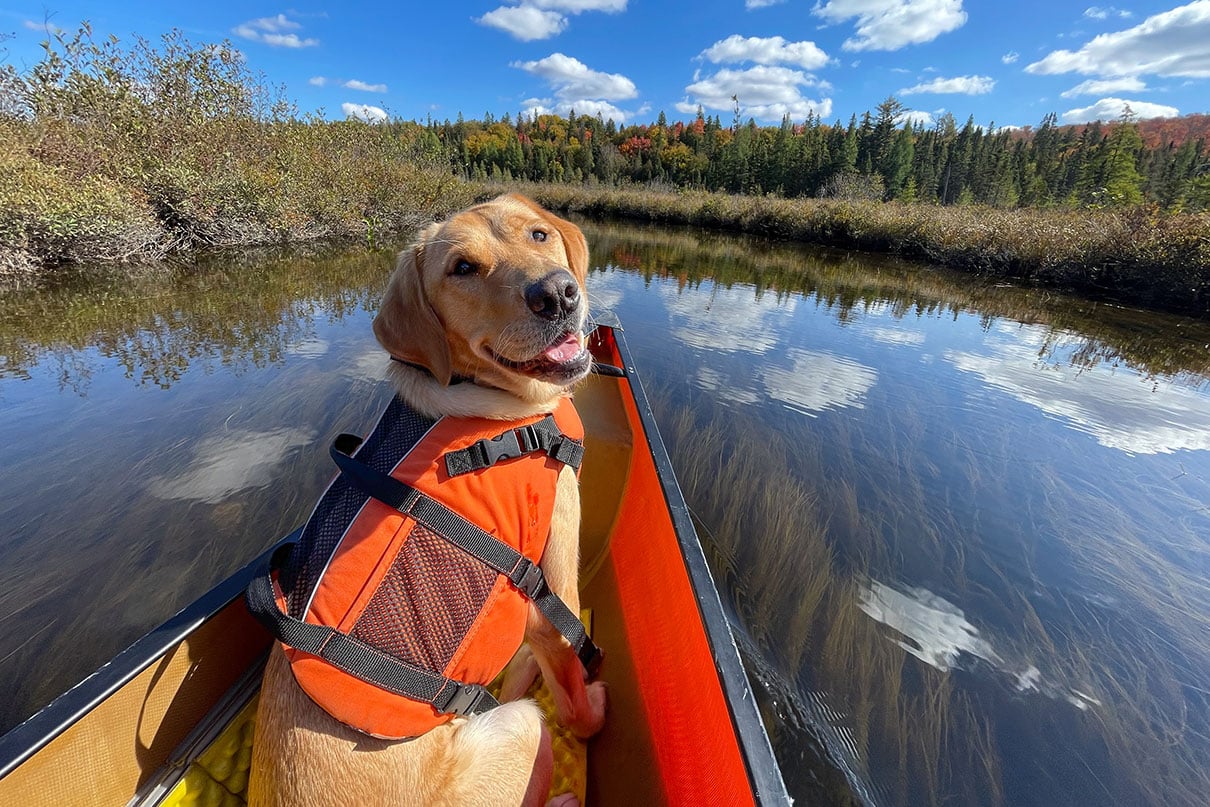
Comfort
Kayaks get the nod for the most comfortable seats. Recreational and fishing kayaks frequently come standard with padded and highly adjustable seats, many featuring tall backrests.
Canoe seats are more basic. The classic canoe seat is a flat bench covered with either cane or nylon webbing. Some canoeists opt for an after-market canoe seat with back support for extra comfort.
Despite the basic design, some paddlers may prefer canoe seats due to the higher sitting position. A canoe’s bench seat allows you to sit, kneel and stretch your legs, which can be a game-changer for paddlers with back, hip or knee injuries who might struggle with the fixed position of a sit-inside kayak. Some recreational kayaks feature seats with adjustable heights.
Seaworthiness
Seaworthiness is a factor that might make you choose a kayak instead of a canoe. Touring and sea kayaks are designed to excel on big open water. These kayaks are longer, narrower, and have a lower profile than recreational kayaks, which improves speed and tracking while reducing wind resistance. The enclosed cockpit and use of a sprayskirt provide some protection from waves and wind.
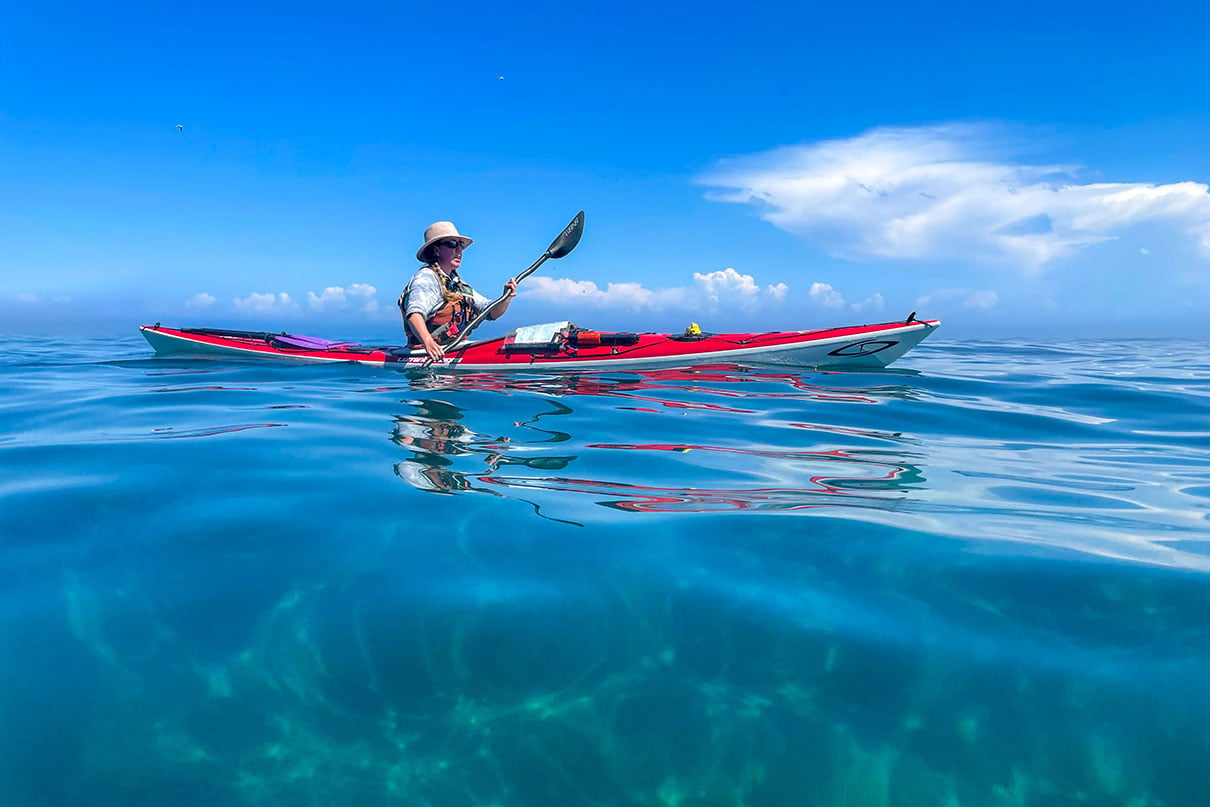
The open design and higher profile of sit-on-top kayaks leave them more exposed to wind and waves, making them less efficient and harder to control in rough conditions. Likewise, a canoe’s open and deeper design, combined with a higher seating position, makes it more susceptible to wind than a kayak. Waves are another challenge. If waves are big enough, they can splash over a canoe’s gunwales, filling the boat with water.
Ease of transport
Whether you choose to paddle a canoe or a kayak, don’t forget to consider how you will get it to the water and back home, as the ease of transporting your boat will play a significant role in how often you get out paddling. The more manageable your canoe or kayak is to load and unload, the more likely you are to enjoy frequent trips on the water.
For beginners just getting into paddling, canoes are easier to tie down on your car by using simple foam blocks and without needing a specialized roof rack system. While foam blocks are also available for kayaks, canoes generally work better with this setup.
Most paddlers invest in a kayak- or canoe-specific roof rack. It provides a secure way to transport the boat, while also protecting the car’s finish and ensuring the safety of other drivers on the road.
Overall size
When it comes to weight, both canoes and kayaks can range from as light as 20 pounds to over 100 pounds, depending on the material the boat is constructed with. Composite materials, like carbon and Kevlar, are lighter and more expensive than plastic constructions. What a canoe or kayak is made of impacts performance, aesthetics and how long the boat lasts over time. If you want a lightweight canoe or kayak, countless options are available.
Canoes and kayaks are both built in a range of sizes, from less than 10 feet to longer than 20 feet. Specialty canoes built for large groups of paddlers can be even longer. Most canoes purchased are tandem (two-person) models. These canoes are generally around 16 feet long. Most kayaks purchased are solo (one-person) designs. Many of these are recreational kayaks that are under 12 feet long. So, it’s safe to say the average canoe purchased is larger than the average kayak. Folding canoes and kayaks are good options for paddlers with limited storage space.
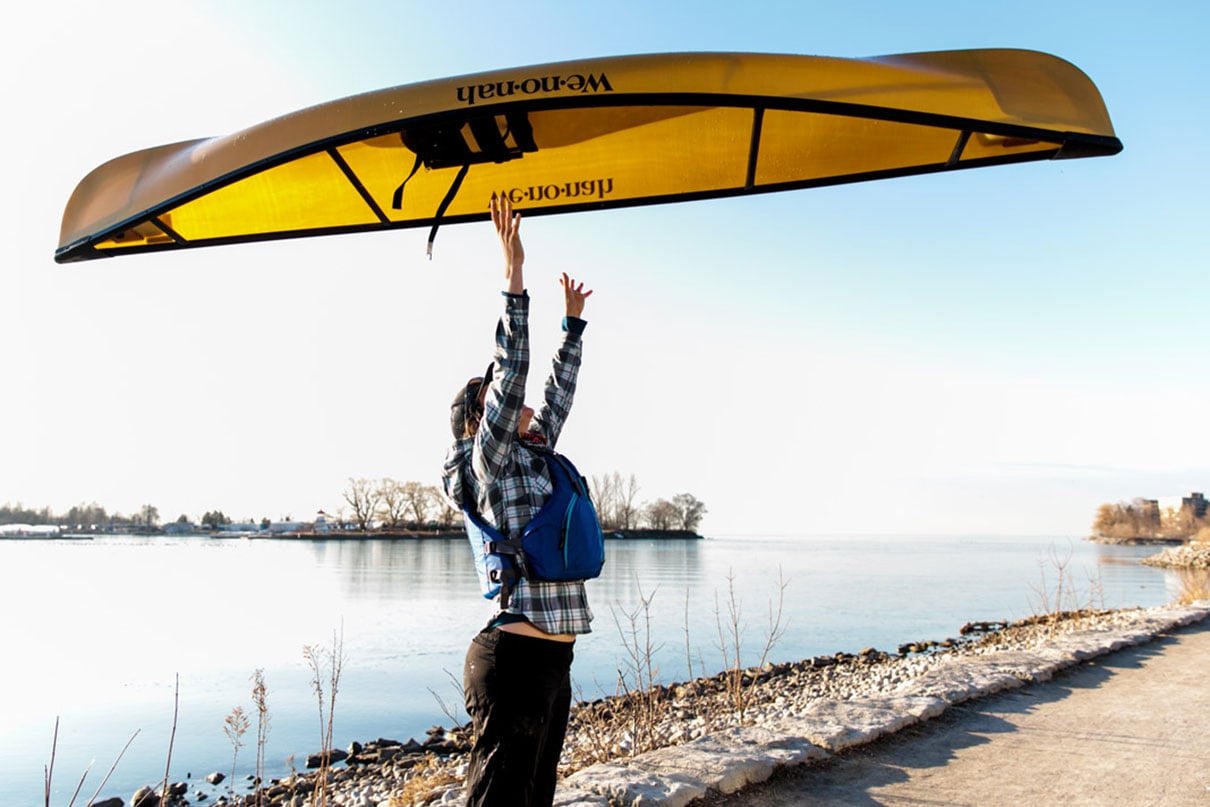
Maneuverability
Canoes and kayaks come in various shapes, and their maneuverability largely depends on hull design. This is more important when choosing between different types of canoes or kayaks rather than between a canoe or kayak.
In general, shorter models are more maneuverable. Boats with more rocker (a banana-shaped keel) turn more easily while racing designs feature minimal rocker to track straight. Canoes and kayaks for new paddlers typically feature moderate rocker to help with maneuverability while still providing some tracking.
Portaging and portability
Many popular backcountry canoe routes involve portaging, which means carrying your canoe from one lake to another. The best strategy for portaging involves putting your camping gear into a few large dry packs that are easy to manage on the trail. These packs are easy to load in and out of a canoe but would be impossible to stuff into a typical kayak.
Canoes are often fitted with a portaging yoke, which allows a canoe to be carried on the shoulders of a single person. Kayaks are usually portaged by two people, one on each end. Moving a kayak around solo requires balancing the cockpit opening on your shoulder. This works for short distances but is awkward and uncomfortable for longer carries. For trips with lots of portaging, canoes are generally superior to kayaks.
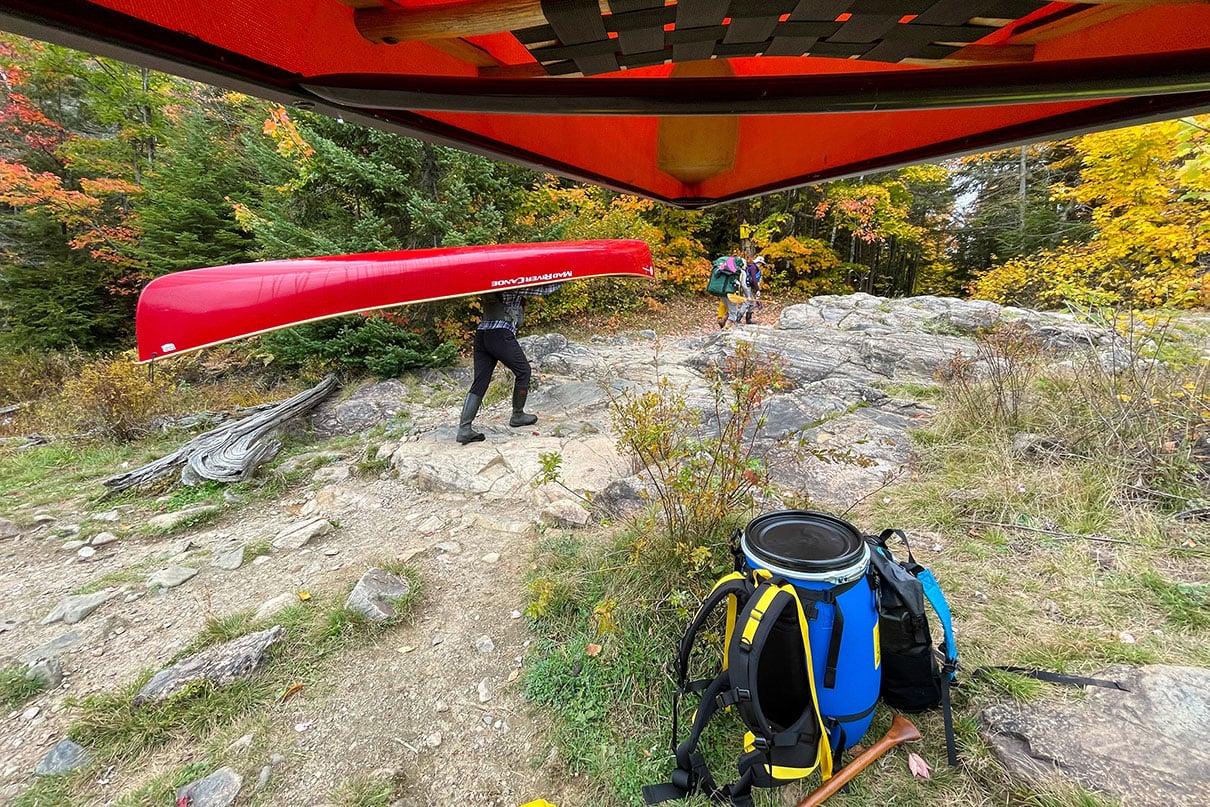
Speed
Long, skinny canoes are fast, while short, wide canoes are slow. Generally, the longer and narrower a canoe is, the quicker it will move, though it may be less stable. The same goes for kayaks. Longer kayaks are faster than shorter ones, and narrower kayaks are faster than wider designs of the same length.
Speed alone isn’t usually a reason to choose between a canoe or kayak unless you’re focused on racing. It’s more relevant when deciding between different designs within each category.
Versatility
For sheer versatility, some paddlers argue a recreational canoe is a more versatile craft than a recreational kayak. A 16-foot canoe can be paddled solo or tandem and can be equally suited to short backyard paddles and longer expeditions. The canoe’s open design lets you bring kids, pets or extra gear, offering more flexibility than the average recreational kayak.
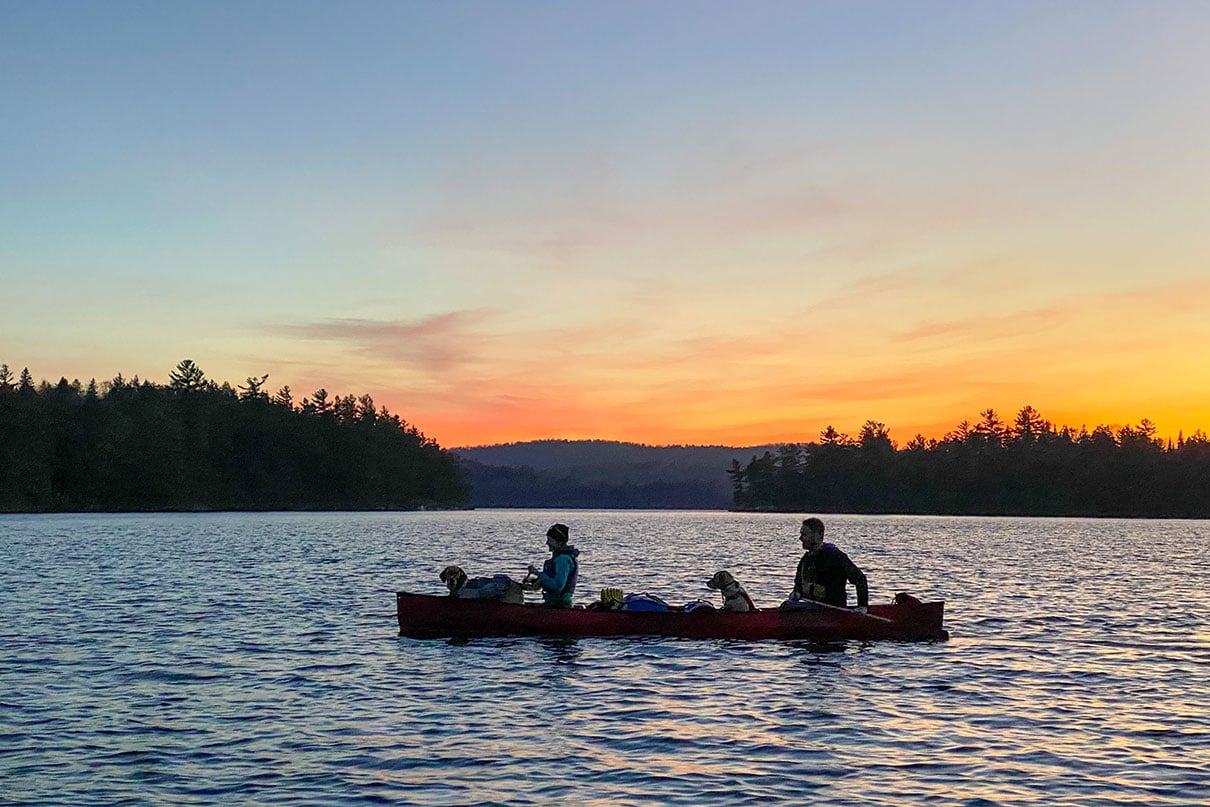
Which is better for beginners?
When I help someone decide on the right boat, I always ask where they want to paddle. This is usually the most crucial factor in determining whether a canoe or kayak is better. I’ve outlined some advantages of both canoes and kayaks above, and beginners should consider these as they decide between them.
That said, kayaks are easier to get the hang of than canoes for most newbies. A complete beginner can jump into a kayak with a minimum of instruction and do a halfway decent job of getting from point A to point B. Canoes take a little more practice and maybe a little bit of instruction. So, if you want to get out on the water with minimal fuss, a kayak can be a good choice.
Is a canoe or kayak better for fishing?
You can fish from a canoe or kayak, but the choice of which to use depends on where you’ll be paddling. If you’re traveling in classic canoe country, like the Boundary Waters of Minnesota and Ontario, you’ll want a canoe for efficient portaging. In these situations, you’ll fish from a canoe because it’s the best tool for the trip, not necessarily because canoes are preferred as fishing craft. Similarly, if you’re hiking into a remote lake to fish, you may prefer an ultralight canoe to a heavier kayak.
Canoes are also a good choice for tandem fishing. A canoe usually has more room between the paddlers than in a tandem kayak. This makes it easier to avoid hooking your paddling partner with your backcast. Tandem boats also allow one person to steer while the second paddler targets the fish.
These exceptions aside, most people prefer to fish from kayaks, especially if paddling solo. Specialized sit-on-top fishing kayaks are among the most popular boats among anglers. These kayaks are often wide enough to stand in and sometimes feature pedal foot drives that allow you to keep your hands free for casting.
Sit-on-top fishing kayaks are usually heavy, especially if they are wide enough for standing, so some kayak anglers choose to use more traditional recreational kayaks outfitted with rod holders and other fishing accessories.
Interested in kayak fishing? Check out Paddling Mag’s sister publication, Kayak Angler.
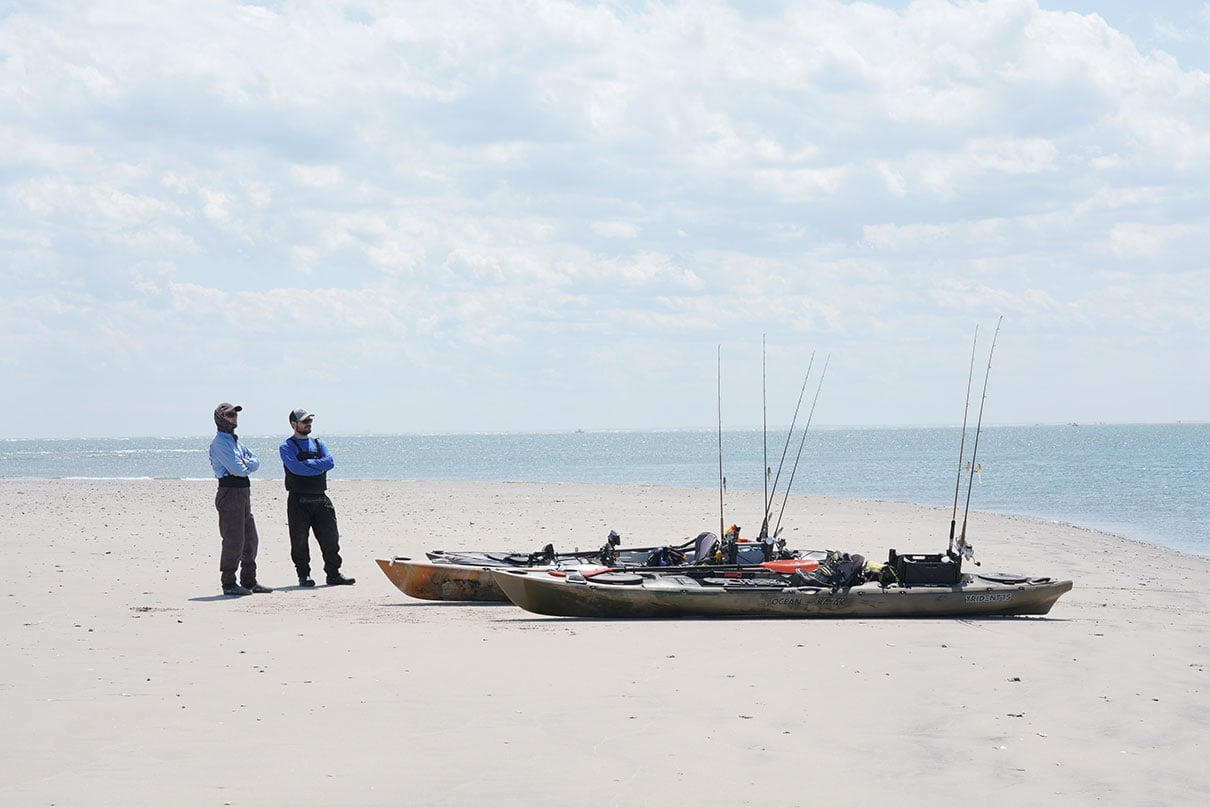
What’s better for two people?
Canoes have some significant benefits when it comes to tandem paddling, especially for families with children or pets, but it is a personal preference. Ultimately, it depends on the type of paddling you will do.
One disadvantage of tandem kayaks is that the bow and stern paddlers need to coordinate their paddle strokes so they don’t crash their kayak paddles together occasionally. This problem is eliminated in large coastal touring designs with more space between the cockpits, but it is a factor in most tandems. Tandem canoeists usually sit far apart in the boats and typically use single blades paddled on opposite sides, so there is no need to synchronize strokes perfectly.
Canoe vs kayak: The verdict
Which is better, a canoe or a kayak? The answer is: It depends. The right choice of craft comes down to how you plan to use it and which factors are most important to you. If you’re interested in coastal touring on the ocean or Great Lakes, a sea kayak will be the best choice. If you want a boat for dawn photography sessions, you may prefer a solo canoe. Fishing kayaks get the nod for anglers who don’t want to compromise on stability and features. Tandem-tripping canoes are best for classic trips on lakes and rivers. There’s no easy answer to the question of which is best. This is why, if you look in an avid paddler’s garage, you’ll frequently find both canoes and kayaks—and often a couple of types of each.
Feature photos: Kaydi Pyette



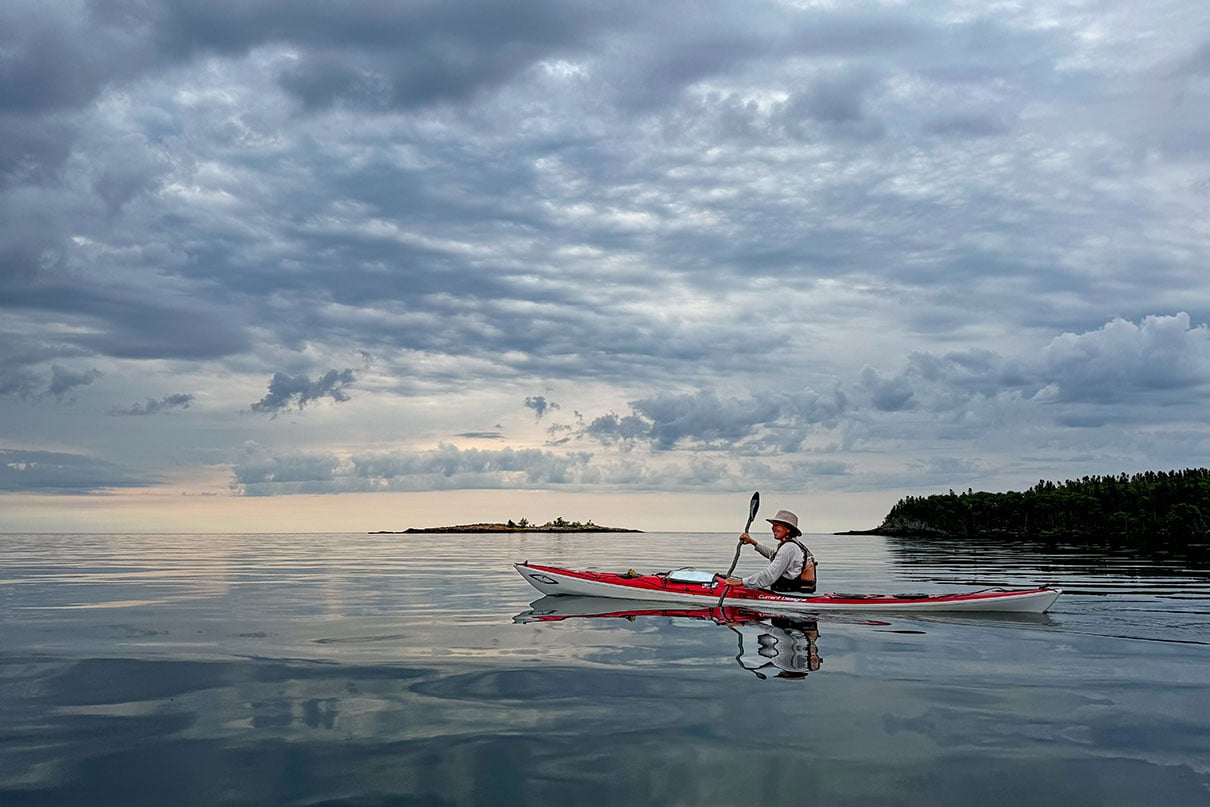
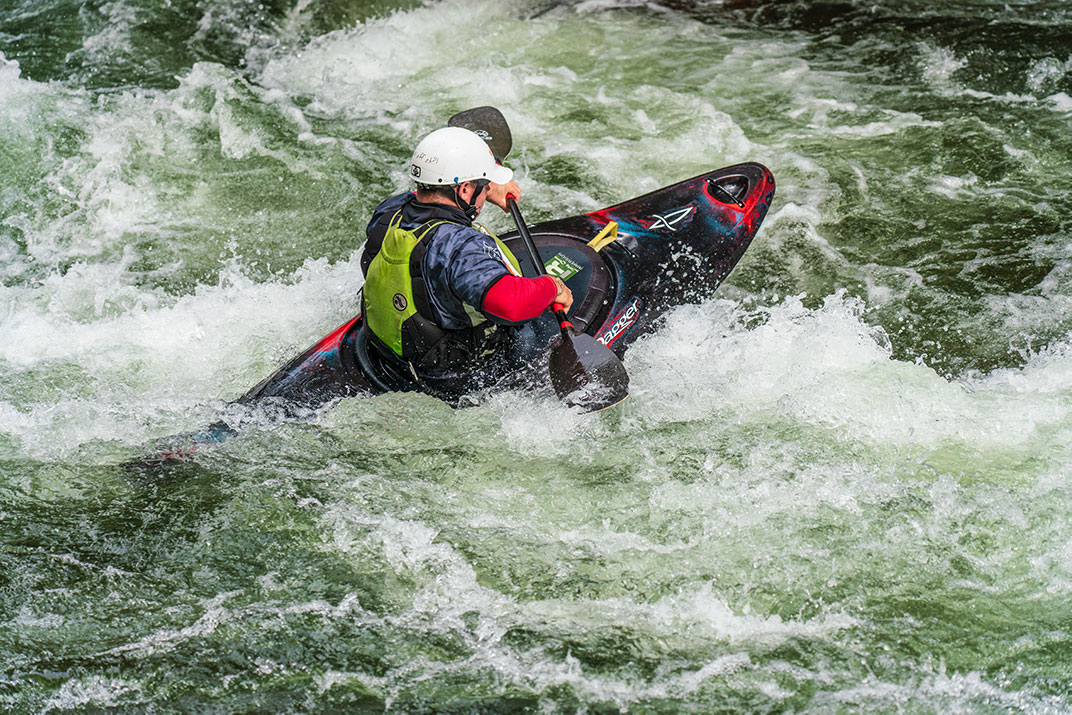
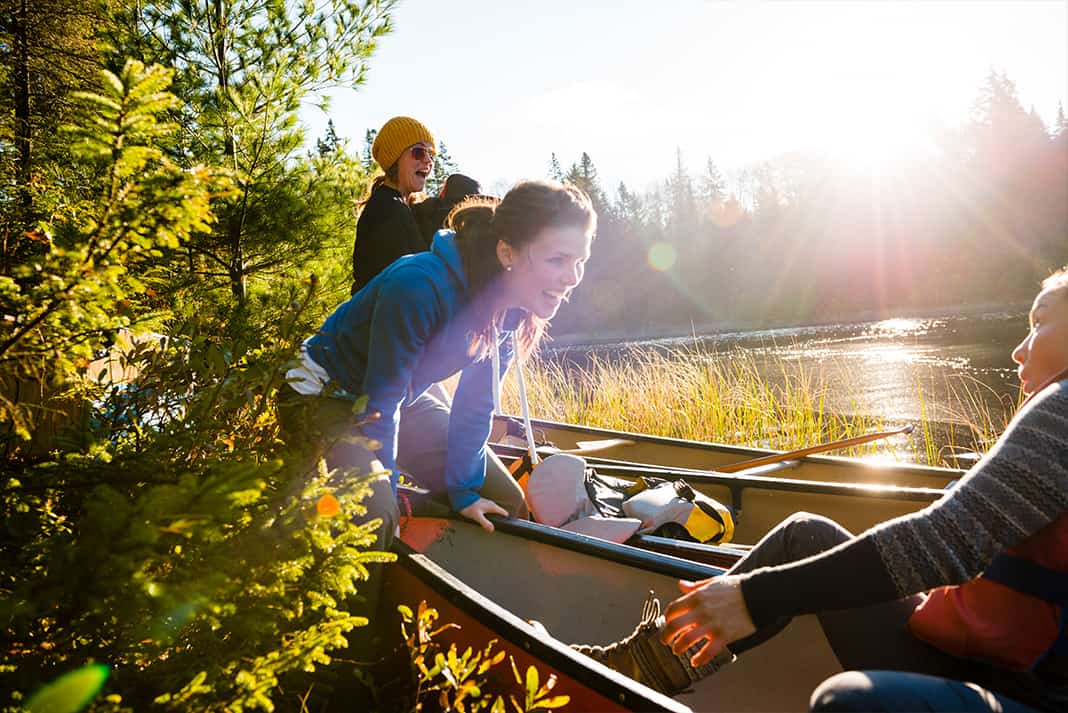

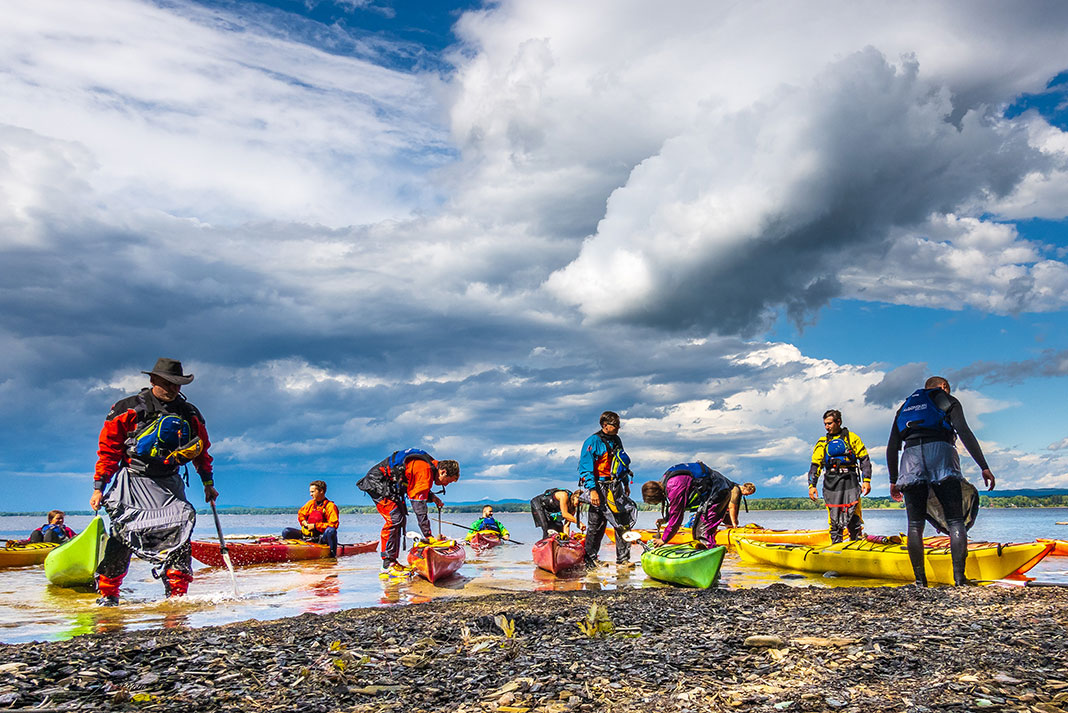
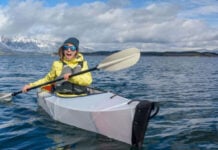

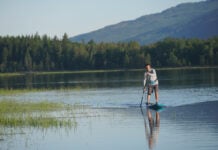
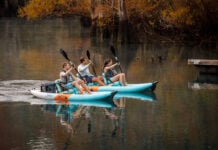


Everything you said is true. You could have mentioned for paddlers who are old and ca no longer cartoons even a light craft a trailer is an option.
Mistaken spelling prompts another attempt. Everything you said is true. You could have mentioned paddlers who are old and unable to cartop even a light craft, a trailer is an option.
Another couple of advantages of canoes: If you are over 40 or 50, it is much nicer to be able to stretch your legs and move them around. At age 70, I hate to think about how stiff my legs would be after 3 or 4 hours in a kayak. The other canoe advantage is the weight of the paddle. My wife and I each have carbon fiber paddles that weight less than nine ounces (made by ZRE). There is no way that either of us would want a heavier paddle. Most kayak paddles weight 3 or 4 times that much. Sadly, so do some canoe paddles, but with present technology, a carbon kayak paddle would still be at least twice as heavy. With my super lightweight paddle, I can go out for 3 or 4 hours and my arms still aren’t tired.
I agree with everything but feel there were a couple of things missing. At 68 and with bad knees, I’ve found it much harder to get in and out of my kayak. Just getting my legs out is difficult (unless I wet exit. LOL). I’ve gone to larger cockpits which makes that easier, but standing up with or without help can be very difficult. In a canoe, I can simply put my hands on the gunnels and step out (easy-peasy). This can make a big difference if you are boating in low water and occasionally get stuck on gravel. The other difference I realized long ago when going from a canoe to a kayak. Since you are higher in a canoe, whether you are sitting or knelling, it is easier to read a river. It really amazed me what a difference a few inches can make. Great article.